I must admit, it’s something of a minor miracle that I enjoyed Deathloop as much as I did given the amount of complaining I’m about to do.
Arkane’s work since the exceptional Prey in 2017 has struck me as being somewhat… experimental. They released the Mooncrash expansion for Prey, which had a set of characters going on pseudo-randomised runs through a wrecked moonbase; the gimmick here was that since the runs were sequential in in-game time the things you did with the first character would alter the run for the second character — weapons and ammo that you swiped would be gone, switches would remain switched, and new routes could open up based on your prior actions. It was an interesting idea, but since it was a DLC it was never going to explore it in the depth that it really deserved and so I didn’t get on all that well with Mooncrash. They also helped out on 2019’s Wolfenstein expandalone Youngblood, which tried to turn limited development assets into a strength by having you revisit the same areas over and over again on different missions that would shake up the layout and enemy distributions on each run. And despite enjoying it as a dumb co-op shooter I had a fairly low opinion of how Youngbood executed on that idea too.
And now comes Deathloop, which is smushing together these ideas first prototyped in Mooncrash and Youngblood into a fully-featured game. Based on my reaction to those games I was really not expecting to get on all that well with Deathloop either, but it has three things on its side that Mooncrash and Youngblood didn’t. First is that thanks to an exclusivity deal with Sony it’s got far more development resources behind it — this is a game that’s supposed to sell PlayStations1, and it shows. Second is that Deathloop has the very good sense to mix in a little bit of Hitman into its game mechanics, and I really like Hitman. And third is Deathloop’s sense of style; it oozes, drips it from every pore, being part pulp `60s spy movie, part surreal thriller (I expect every review of Deathloop will mention The Prisoner somewhere despite nobody actually having the patience to sit down and watch the bloody thing) and part reality-bending Inception-esque sci-fi jaunt.
It’s this third element that I think has been key to my enjoyment of Deathloop. It’s definitely not without a lot of problems, many of which I will complain about in this review because I think there’s a fundamental mismatch between the current critical consensus on it (it’s being heavily trailed as a classic and a GOTY candidate, which it most definitely is not) and the sad reality of what Deathloop actually is. Deathloop’s in good company there, since I also did a lot of complaining about Youngblood and I would have done the same for Mooncrash if I’d ever reviewed it; there is far, far less separating these games in terms of mechanical quality than there really should be given the disparity in budget and resourcing. In Deathloop’s case, though, the omnipresent style helps smooth over those rough edges, from the thorny exchanges between protagonist Colt and his nemesis Julianna to the stunning, ever-changing island environments to the the omnipresent ticking-clock musical theme that segues into energetic jazz when you get into a fight. Arkane’s games have always targeted a distinctive audiovisual identity, but I don’t think I’ve played a game where that style was doing quite so much heavy lifting since Bioshock.
If you’ve been exposed to any of the five thousand trailers the marketing machine’s been cranking out for the last year and a half, you’ll know that Deathloop is about two rival assassins, Colt and Julianna, who are caught in a time loop on an island called Blackreef. Blackreef has been taken over by a nihilistic cult called the Eternalists who started the loop so that they could have a never-ending party with no consequences (the Bioshock comparisons go beyond the style as these guys are basically the splicers without the runup), but something has clearly gone wrong since they live out each day of the loop as though it was their first and Colt and Julianna are the only two people who keep their memories from loop to loop. But they’ve come to very different takes on the situation: Colt wants to break out of the time loop by killing the seven leaders of the cult (called Visionaries), while Julianna wants to protect it by repeatedly killing Colt.
Each day of the time loop is split into four time periods: Morning, Noon, Afternoon and Evening. Colt can pick one of four areas to explore during each time period, and each area contains one or two Visionaries for him to kill. They are not particularly hard to kill; because this is an Arkane game each Visionary has a Dishonored-style power like teleportation or invisibility which you can take for yourself once you’ve killed them, but once you’ve got the power figured out they’re only slightly tougher than the regular mook enemies scattered around Blackreef’s streets and will go down in two or three shots from your handcannon. Most of them are surrounded by significant quantities of henchmen, who are a more significant threat as Colt’s health bar is not large and he’ll die quite quickly if two or three enemies are shooting at him, but if you play it smart you can manage these firefights to the point where Colt is gunning down thirty or forty people in the course of getting to his target and coming out without a scratch. After you see how easily the first Visionary goes down, it seems like knocking off the other six is going to take no time at all.
The catch, though, is that no two Visionaries will be in the same place at the same time. Since you can only visit four locations during a single loop through the four time periods, this means that you can kill, at most, four Visionaries. In order to get the other three you have to manipulate the loop by sabotaging equipment, cracking through locked doors and sending false messages to maneuver your targets into the same part of the space-time continuum so that you can take them all out at once. This is a quite long and involved process; a single run through Deathloop’s eternally repeating day will take around forty-five minutes, but gathering all of the information required to complete a full set of kills took me just under sixteen hours of playtime. Each strand of investigation requires multiple runs through the loop in order to follow up — for example, one Visionary will appear in the Complex area during the Evening to run an experiment, but if you go to the Complex earlier in the day and shut his equipment down he won’t have the data he needs and will go elsewhere. In order to get the required codes to do this, though, you need to kill him in the Evening and loot his lab, and then loop around and use the information Colt now knows to perform the equipment sabotage at Noon so that you can kill him again in his new location in the next Evening period, hopefully along with another target.
This brings me on to Deathloop’s take on the standard time loop problem: at the start of the game the only thing that Colt can take with him from the end of one loop to the start of the next one are his memories. At the end of Deathloop’s far-too-long tutorial he gets the ability to “infuse” weapons and powers that he picks up so that he can keep them between loops — or in other words he buys them with a currency called Residuum that he slurps up from random objects around each map. This only applies to equipment, though, not to plot-critical items, which makes it extremely convenient that every single door, safe and mechanism on Blackreef is locked with a handily-memorisable code of some kind. Sometimes the codes are pretty elaborate and require visiting multiple locations in different time periods to decipher, but once Colt knows one he can automatically bypass the thing it was protecting on any subsequent loop. Much of Deathloop’s playtime is, essentially, an elaborate hunt for codes as you need at least five of them to finish the loop properly, some of which need to be painstakingly assembled across multiple locations and time periods.
Now, I usually save the hammer for the end of a review, but since I’m talking about a game with a time loop, and since I’m talking about time loop mechanics, I cannot avoid dropping it here instead: the current state-of-the-art for time loop games is the superb Outer Wilds, which has a similar emphasis on following up investigation leads to find new information that allows you to progress further in subsequent loops. Outer Wilds records all of this information in a handy computer log, but it never gives the player any overt direction; it simply marks the leads that have yet to be completed and lets the player pick and choose their own path through the game. Importantly, it also lets them figure nearly everything out on their own through direct experience of the loop; one of the reasons I think it’s such a good game is that it actually trusts the player to understand its core concept without too much hand-holding.
Deathloop… does not do this.
Deathloop was always going to have to work extra hard to sell its time loop mechanics to me because, unlike Outer Wilds, time does not progress when you’re inside a level. The only point at which time moves forward is in the loading screen between the end of one level and the start of the next; the levels themselves are totally static aside from a couple of scripted bits and pieces that are player-triggered, not time-triggered. This means that what Deathloop actually is, deep down, is a standard FPS where you have level select unlocked from the start. The only real difference is that you have to figure out which sequence of levels is the correct one and what actions to take inside each one to finally end the loop. If it were another developer making this game I’d already be screaming “cop-out!” but Arkane are the one studio that I’d be inclined to give the benefit of the doubt to. Their level design has always been heavily focused around multiple routes, side areas and optional objectives that reward exploration, and I think that (relatively) undirected exploration through Deathloop’s levels to try and figure out the loop could have been really fun.
I am guessing, though, that at some point during Deathloop’s development somebody at Arkane or Bethesda got cold feet and became convinced that players would not understand the time loop idea and what they were being asked to do. This is why two things have happened that have killed any chance Deathloop had of being a genuinely interesting game:
- Whether it’s because content was cut to make the game less confusing or because Arkane ran out of time and had to ship what they had I do not know, but there is a grand total of one “correct” route through Deathloop. It is incredibly prescriptive; you must do action X followed by action Y followed by action Z, with very little room for improvisation or variation.
- Just in case that wasn’t straightforward enough, that one route (along with the codes required for unlocking it) is explicitly signposted to the player through a set of mission chains called “Visionary Leads” that have the standard FPS objective markers. This ensures that you never actually need to think while playing Deathloop; you just follow the same damn waypoints that you can find in any open world game until you run out, at which point congratulations! You’ve finished Deathloop.
To say this was disappointing would be a tremendous understatement. I’m not sure if Deathloop is the worst Arkane game that I have played, but it is certainly the dumbest, asking very little of the player except for the ability to follow waypoints while shooting people in the face. The tragic thing is that you can see the outline of a much more interesting game in here, one which still casts a faint shadow of what Deathloop could have been. For example, in the Fristad Rock map you infiltrate the base of a Visionary called Frank so that you can kill him, but Frank’s base is festooned with security systems and you also can’t get into the front door without a “ClassPass”, which disables all of your Dishonored powers. But it turns out that Frank’s security system, including the ClassPass, was created by another Visionary called Charlie, and Charlie has locked the master code for it behind a door in his compound in Updaam. The catch? You need a ClassPass to get in, and you can only get those from Fristad Rock.
So the idea here is that you go to Fristad Rock in the morning, get the ClassPass, probably kill Frank on that loop the hard way, and then go to Updaam with the ClassPass so that you you can get through the locked door and acquire the master code; this will make subsequent runs through Frank’s base much easier. On the face of it this is pretty cool! You can choose to endure a bit of short-term pain on this iteration of the loop in exchange for opening up a shortcut for killing Frank later on — sure, it’s basically just your standard Dishonored level design except spread out over multiple areas, but that’s kind of what I was expecting from Deathloop. But the big problem here, though, is that Deathloop has that One Correct Route through the game, and Frank’s base is most decidedly not on that itinerary since he’s one of the Visionaries that you manipulate into being killed elsewhere. You do have to visit it once to get a piece of information from a tape recorder — just like Arkane’s other games, Deathloop loves its audio logs — but once that’s done you never, ever have to go back. So what exactly is the point of me going through all of this effort to get unrestricted access to a place that I’m never going to go to again?
Deathloop is full of “alternate” routes like this that end up being rendered totally useless by its dogmatic insistence that there’s only one way to complete the game. Charlie’s base is supposed to be a big LARPing ripoff of Among Us with a real rocket engine rigged up in the middle of it, and if you futz around gathering batteries and plug them all into the rocket you can turn it on to kill everyone in the compound. Great! Except Charlie is another one of the Visionaries who isn’t supposed to be killed where you first find him, and if you do you can’t successfully complete the loop. The Visionary Egor has an invisibility power and a sniper rifle which makes him annoying to fight in an open area, and since Egor is also a raging paranoiac if you go to the Complex in the Evening you’ll find that he’s set up a bunch of turrets and cameras and tripmines; if you trigger any of them, or make any noise at all, it’ll tip him off that you’re coming and you’ll have a proper fight on your hands. But if you take the trouble to sneak by or otherwise bypass his security systems he’ll have no idea you’re there and you can just shoot him in the head from cover2. Once again, though, since you’re not supposed to kill Egor there it feels like taking the trouble to do this is nothing more than a waste of time; you just need the stuff from his lab and then you can leave and never come back.
This is the problem with the critical path being so constrained, then: where Arkane’s other games would offer you four or five different routes to a goal, all of which were equally valid, Deathloop has just one, with any other routes or kill methods that might exist being rendered meaningless because they’re off the critical path and taking advantage of them will render that loop uncompletable — if you kill Charlie in his base with the rocket engine, then he and Fia won’t go to their secret rendezvous together, and that’s the only way to kill both Charlie and Fia on the same loop. The only place where you get even a hint of real choice is in the final level, where you’ve manipulated three of the Visionaries into attending the same party and have to figure out how to kill them without being swarmed by the rest of the party guests. The party is the one location in the game where spending a bit of time on previous loops to learn the layout and scout out how exactly you were going to kill your targets felt worthwhile, and where you can try some of the special kill methods to see if they’ll make your life a bit easier It’s still not even remotely close to Arkane’s previous work, though, and it’s frankly a little astonishing that the sum total of Arkane’s ambitions for Deathloop amounts to a single bad Hitman level3.
(I should also talk about the weird level design in general somewhere, so I’ll stick it here. Deathloop has an odd problem for an Arkane game: it only has four levels, but even so two of them are mostly “empty”, irrelevant space. Most of Karl’s Bay is taken up by a colourful theme park complete with minigames, but your actual target for that level is in a boring aircraft hangar in a corner of the map; the theme park isn’t used for anything except as a place to put a safe to hide yet another code. The Complex has an entire armoury annex that’s only available in the Morning time period and which is full of booby-traps; I spent a tense 15 minutes picking my way around all of the landmines and tripwires to get a code for a door at the start of the armoury that turned out to contain… absolutely nothing. Why are these areas here when they don’t do anything? Why could Arkane not figure out anything worthwhile to put inside of them? I don’t know the exact reason, but I think it’s a pretty good sign the last twelve months of Deathloop’s development were not happy ones.)
Speaking of Hitman, Deathloop doesn’t have a good answer to the question that Hitman answered quite satisfactorily: even where a special kill method is available and worthwhile, what is the incentive for me to take it over and above just shooting my target in the head? In Hitman there’s various scoring criteria and in-game challenges to incentivise smarter play, but the root of the answer is usually because there’s about a hundred guards on the map and they’ll all come for you if you go loud; the ensuing firefight is apocalyptic and highly unlikely to end in your favour, and even if it does you’ve effectively broken the level from that point onwards. In Deathloop, on the other hand, the enemy AI is really strangely pitched. Alarms are genuinely dangerous, as are the golden enemies that summon reinforcements, but after you’ve played the game for an hour or two you’ll notice a couple of weird oddities. First is that the sound of your gunshots doesn’t carry all that far, and aside from a few high-density locations (such as the party) enemy groups are dispersed far enough apart that shooting one guard will only alert the nearest 3-4 others. In Dishonored this would be a serious problem that would require expending gadgets to fix, and so would be something to be avoided if at all possible, but in Deathloop it just means pulling the trigger four more times. The second weird thing is that while your gunshots might not carry all that far, enemy gunshots don’t appear to carry at all; if you charge a pair of guards with a machete and one of them gets a few shots off, the five other guards in the room next door won’t hear a thing.
Now, I get that Deathloop is not Hitman. I get that it’s a more action-y game and that you’re supposed to get into gunfights, which Deathloop actually does extraordinarily well. The enemy AI being extremely forgiving in terms of alert status and not swarming you to death is a deliberate design choice, since it would be a shame if the player were dissuaded from seeing that side of the game. But that comes at a cost, since in terms of effectiveness even the Dishonored powers pale into insignificance compared to just casting the “Gun” spell over and over again. The quickest, simplest and easiest solution to any problem in Deathloop is to shoot it in the face, and this is not what I was expecting when I bought it. I was expecting far more to be made out of the potential for cause and effect, doing things in earlier loops to affect later ones, but it turns out there’s maybe five of these things in the game in total and they’re all on the critical path — meaning they’re heavily scripted and signposted. It’s a timeloop game where time almost isn’t a factor because, unlike Outer Wilds, Deathloop places zero faith in the person playing it. And given Arkane’s previous design ethos, that is incredibly disappointing.
Since the bulk of the complaining is now out of the way, it’s time to mention a few ameliorating factors. I said up top that Deathloop is tremendously stylish, and this remains probably the primary factor in my getting to the end of the game, but I should also spare a few words for the weapon design. Deathloop might be a far dumber game than it first appears, one which asks nothing more of the player than the ability to mow down everything they see in a hail of lead, but it at least hands you an appropriate set of tools to do it. The standout weapons are the Fourpounder hand cannon and the Rapier single-shot rifle, which have an absolutely tremendous report and an extremely visible impact effect to match. You can get higher quality versions of each weapon that have special traits; there’s a version of the Fourpounder that fires more slowly but which will one-hit kill everything in the game (although you’ll have to get a headshot if you’re pointing it at a Visionary), and I cannot think of an FPS weapon that I’ve had more fun using in the last five years. One thing Deathloop does retain from Dishonored is the exceptional player mobility, too; the various special powers might be underwhelming in general but the teleport power has made it across completely intact, and it is tremendously satisfying to flit around Deathloop’s levels while gunning down hordes of mooks. There’s even a cool sense of mastery that starts to emerge once you’ve done enough runs through the loop, where you know the layouts and the location of all of the enemy packs and can zip to your objective and back in record time. It’s just a shame that Deathloop does absolutely nothing with this, since mastery is largely useless when there’s no scope for improvisation — after all, it doesn’t really help that I know the entire level like the back of my hand when the only part of it that matters is the room containing my target.
Then there’s Deathloop’s adversarial multiplayer mode. I mentioned at the start of the review that there’s another assassin called Julianna who is trying to stop Colt from breaking the loop, and she’ll do this by occasionally teleporting into the level, locking the level exits and hunting him down. By default Julianna is controlled by a not-very-good AI that’s easy to kill, but if your game is set to Online mode you’ll instead get other human players invading your game as Julianna and have to engage in some tense cat-and-mouse gameplay to fend them off. I was expecting to hate this gameplay feature, just as I hated it in Dark Souls, but I was surprised to find Deathloop’s implementation growing on me. It helps that the odds are very much stacked in the hosting player’s favour since they get three lives on every map while the Julianna player only gets one; they have to work pretty hard to properly kill you and none of the five Juliannas I’ve fought have managed it. It’s a good idea that is, sadly, totally let down by its higher-level implementation into the broader structure of the game; I have tried to play the other side of this as Julianna and spent about half an hour in matchmaking queues which led to one actual game (which I did not win). For the others I either got disconnected from the game during the matchmaking process, or the player I was invading quit the moment they saw me arrive. Because you can only connect to other players in a very brief window after they’ve started a level, and because they need to have Online mode switched on, this leads to hefty matchmaking queues even with the glut of release players and I strongly suspect that this will be a dead game mode in two months’ time.
So Deathloop really isn’t all that. I enjoyed playing it, but the level of that enjoyment was inversely proportional to the amount of time I’d spent with it, since unusually for an Arkane game it’s all flash and practically zero substance. It does the shooting side of things well but they’ve backpedalled away from the time loop concept as fast as they possibly can and the mediocre level design can’t really prop up what is now a more-or-less linear shooter. Neither can the backstory and audio logs, since what passes for Deathloop’s main story goes nowhere and ultimately has a worse ending than Prey did. It’s the first game Arkane have made that I’m utterly disinterested in replaying, and while its sense of style does, unusually, count for quite a lot, it’s not really matched by its sense of spectacle. I install Bioshock every now and again to play through its opening4, which is still one of the all-time greats, but I can’t imagine ever doing the same thing for any of Deathloop.
- Which is incredibly ironic now that Arkane are owned by Microsoft, but I guess they couldn’t get out of that contract. ↩
- If this sounds familiar it’s because it’s Arkane trying to repeat one of their high notes by doing Dishonored 2’s Clockwork Mansion again, except Deathloop’s take is far less elegant. ↩
- Take any level from the modern Hitman games and you’ll see significantly more variety and choice in that one level than you’ll find in the entirety of Deathloop. ↩
- Just the opening though. The rest of Bioshock has aged like milk. ↩

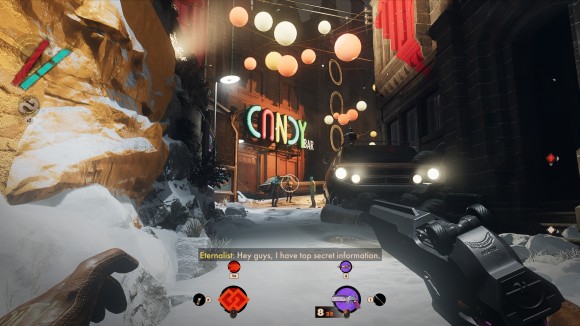
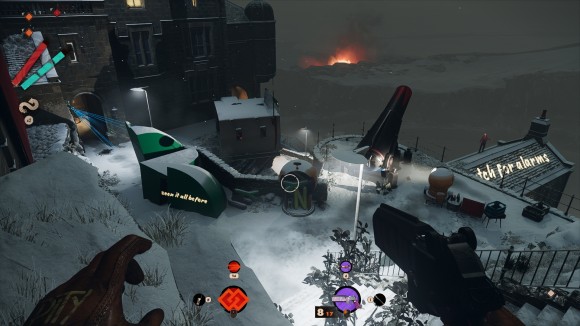
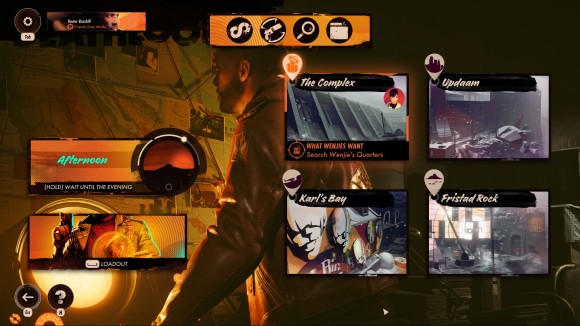
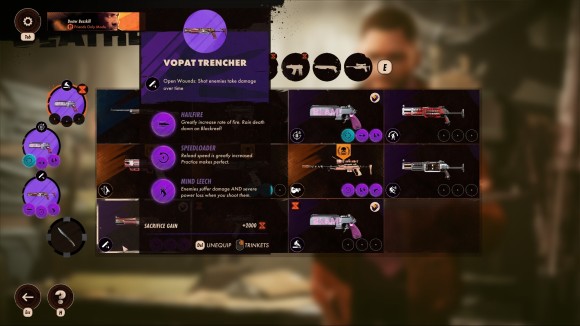
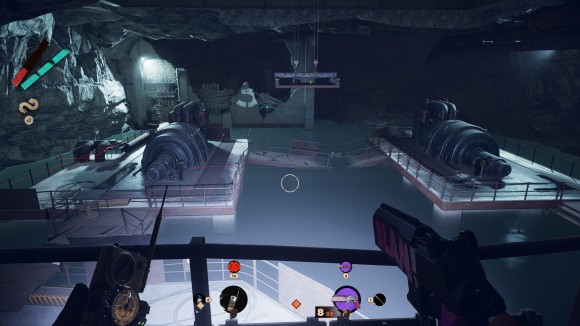
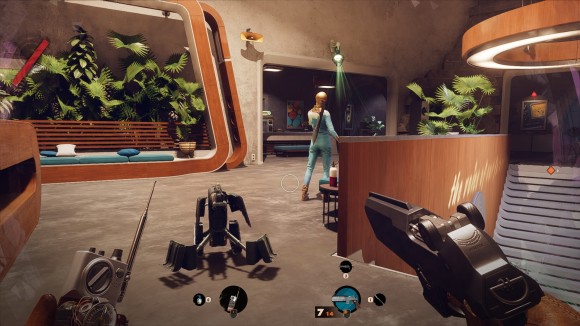
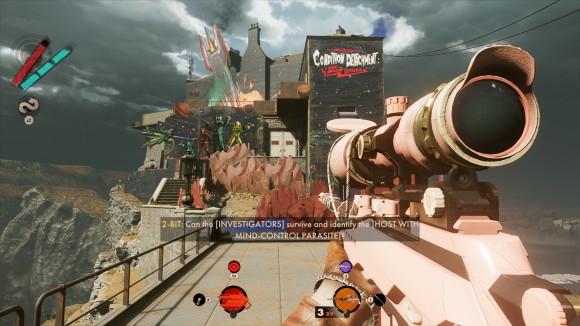
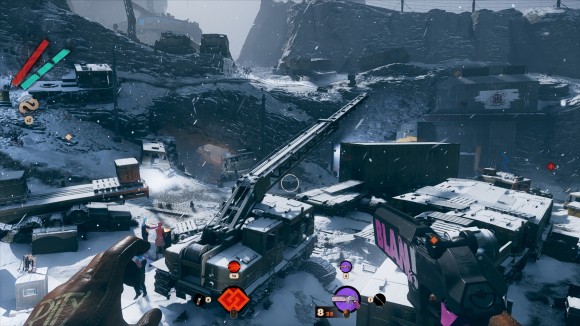
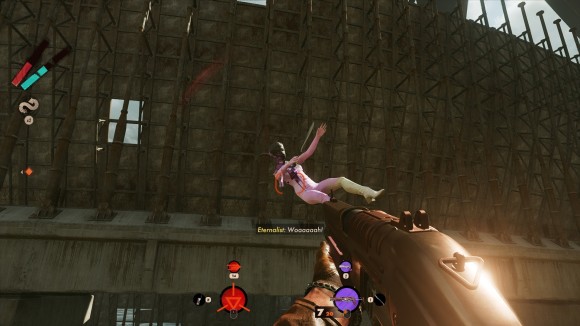
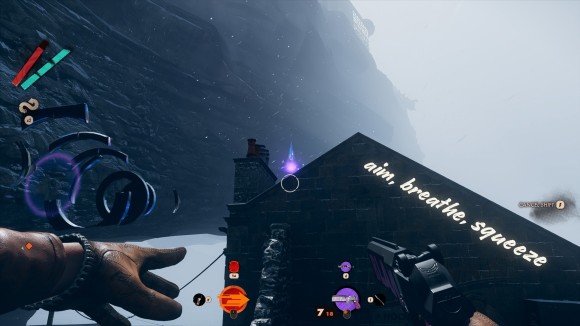
Worst Arkane game unfortunately. Everything they’ve done before has had elements of it done better. And I know you didn’t get on with Mooncrash but you should give it another go because it’s ideas are great, and better executed than Deathloop.
I was happy to play and complete Deathloop, but as I get more time away from the ending, the more disappointing and bland I realise it was. If anything I think you’ve been uncharacteristically lenient here, and I say this as an Arkane fanboy.
But it is also the first Arkane game where the /shooting/ has been excellent. Time with iD on Youngblood well-spent I guess.
I admit I have not made a ton of progress in Deathloop thus far, but I will say that I’m finding it far less prescriptive than you. For example, you mention that Alexis can be drawn somewhere else for his assassination (and I’ve found something like three distinct ways to identify which partygoer he is if he’s at the party) but the game has strongly suggested that there’s a way to get Wenje to his party. I suspect that there are more ways to reach the end of the game than just one set path, but it probably won’t be obvious until enough people have beaten it for guides to emerge.
Alas, getting Wenje to the party is on the One True Path. The Alexis kills are the one bit of latitude you have on that path, as the other two targets don’t appear to have any special kill methods.
I don’t want to be down on it if you are enjoying it – it is definitely enjoyable. But about halfway through I realised that all of the things I’d been trying to figure out on my own were actually part of explicit the mission breadcrumbing in the Visionary Leads, and I’d just been trying to do it a few steps too early. I had it out for Deathloop from that point onwards.
Hmm. I will look into this once I’ve beaten the game. I’m playing without using the target markers, and it’s been a lot of fun. Even if it’s a Majora’s Mask thing where there’s really only one solution, I don’t feel like my hand is being held as I suss it out.
Alright, I’ve got all the pieces in place, so yes, you are absolutely correct that there’s only one way to actually complete the loop. I agree that’s kind of disappointing, but I didn’t use objective markers and had a very fun time figuring it out on my own (and, from what I can tell, had a longer playtime than average as a result).
Disabling the objective markers is probably the way to go here and I kind of wish I’d thought of it myself.
The only time I felt the need to use them was to find the archives building. Everything else was extremely well sign-posted. I get why they were so heavy handed–I’ll never forget the story of the playtesters for Dishonored not even attempting to go upstairs at the masquerade because the guards told them they weren’t allowed–but I think it hurt the game for a lot of people.